The Flowers
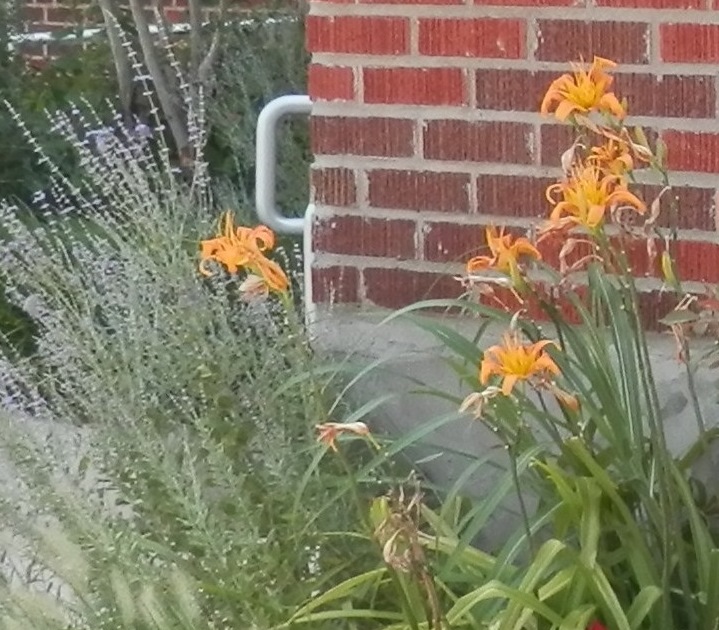
Daylily
The daylily is the American immigrant flower. Traveling to England from its native Eurasian homes, it immigrated to America with the early settlers in the 1700s. A wandering flower, always wondering what lay beyond the fence, the daylily quickly jumped the traces and headed west. It was one of the first flowers planted by landrun settlers.
Though there are modern hybrids in the Territorial Garden, the common daylily stands with them, a strong Oklahoma settler.
Cempoalxochitl
"Mary's Gold" or Marigold. A true Native American, the marigold grows naturally from South American into Mexico and the Arizona/New Mexico region of the United States. Hardy and self-seeding, this wildly colorful little flower was cultivated and hybridized by the Aztecs, taken to Spain by conquistadores and further hybridized as it made its journey across Europe and back to America. From the early 1900's, it was the seeded annual of choice in this country and was once suggested as the national flower.
Our marigolds self-seed each year and come from a Mexican parent plant purchased at a roadside stand. Like our most recent Hennessey immigrants, this sturdy Mexican-American brings vigor and industry to the Territorial Garden.


Helianthus annuus
The Sunflower. Another American native, the sunflower still grows wild today across the prairies of Oklahoma despite efforts to contain it in civilized hybridization. The tall, many-seeded plant was the buffalo of the plant world for the Native Americans of the plains and may have been cultivated before corn. It provided both meal, oil, and snacks for the first inhabitants of Territory land.
Our Territorial Garden sunflowers came as a gift from the birds and self-seed in totally undesirable places each year. We lift them and replant in more acceptable locations, but, still, some are determined to grow where they will.

Iris
Stately and dignified like the women who donated them, the multi-colored irises bloomed their first year in the garden and surprised us with their colors. Prairie iris are native to Oklahoma and were transplanted from the fields to the soddy's door, but these Dutch imported hybrids quickly became the measure of a gardener's status in the territory.

Gaillardia "Blanket Flower"
The state flower of Oklahoma. Even in a drought year, we have a gaillardia that volunteer alongside the building. Heat, sunshine, wind, nothing fazes it. It just sets its jaunty flowers and blooms on, tossing seed every autumn to send children out into the world.
Also called "Indian Blanket" for its vibrant colors, the gaillardia typically blooms in fields and along the roadsides starting in June and continuing until frost. Ours begin in mid-May.
Hardy Hibiscus
Another member of the Malvaceae family, related to the Althea, this hibiscus is as beautiful as its high-born tropical relatives, but infinitely more hardy. Originating in swamps and marsh lands, this plant has acclimated to more demanding climates and now, through hybridization, is winter hardy as far north as Zone 4.
Cultivation notes state that the hardy hibiscus should be grown in a moist soil away from harsh winds, but like the early settlers of this area, the determined hibiscus grows where no one believes it should. The hibiscus in the Territorial Garden has been grown from seed from an Oklahoma parent grown from seed from a Missouri progenitor. Not one of the plants look like the others. Patrons are free to gather seeds in the fall and grow their own.
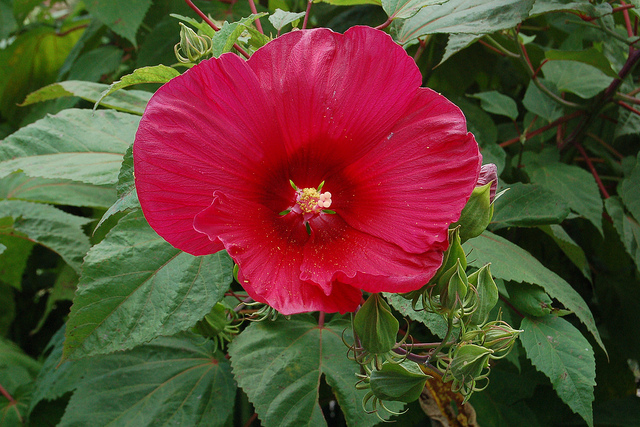
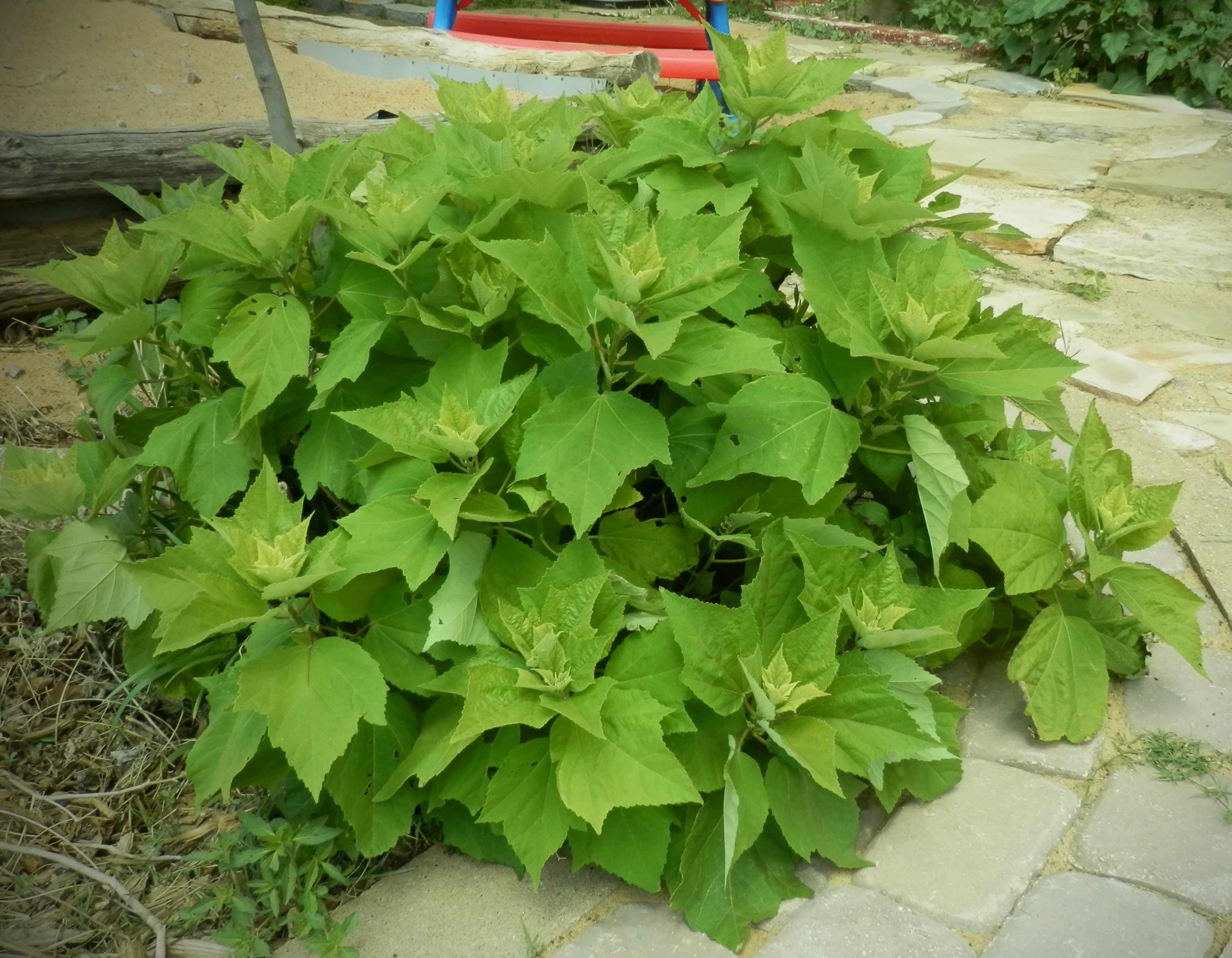
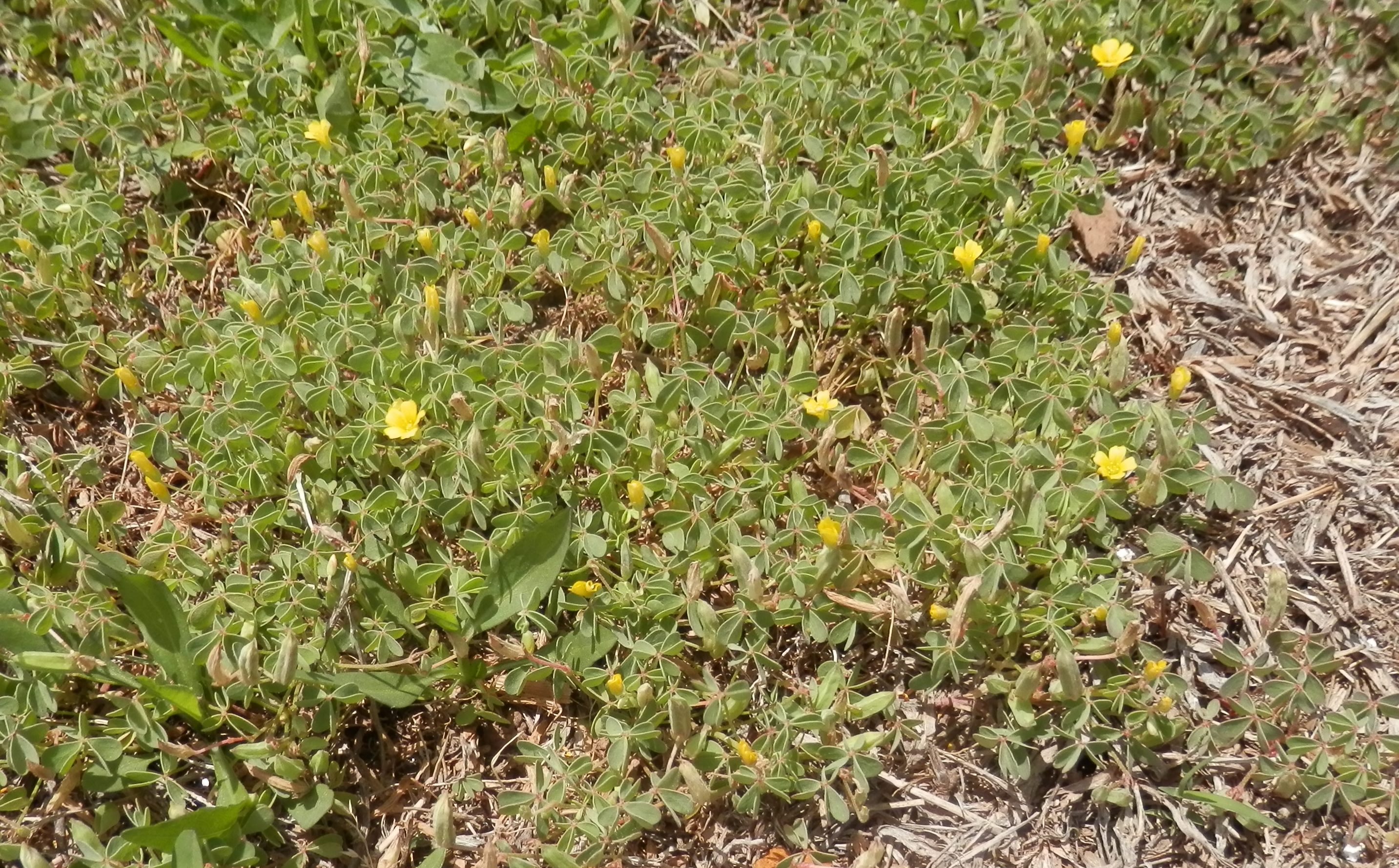
Oxalis stricta
Common oxalis or woodsorrel. Humble and underfoot, the common oxalis sprouts happily in the lawn, in pots, between the cracks in the sidewalk, virtually anywhere its seed drops and there's a little soil and a bit of water.
It pushes nothing out, doesn't mind being mowed, and provides a little green and tiny yellow flowers when allowed to grow.
When this Oklahoma native pops up in a pot, we let it grow. It survives everything and the leaves are edible!

Potentilla
A creeping cinquefoil that smothers weeds and blooms with tiny yellow flowers in the spring, potentilla takes the place of mulch and acts as a ground cover and a shade plant for the roots of taller plants. The problem with creeping cinquefoil is that it creeps. Grow in a area with definite boundaries and semi-agressive neighbors.
The Territory was a good place for those impulsive, expansive, hard-to-manage social misfits that needed, on the one hand-space, and on the other-containment. Some became Ranniky Bills, others became Daltons, and the oilfields swallowed many, but all brought a burgeoning energy to the prairie that pushed progress and demanded LAW.
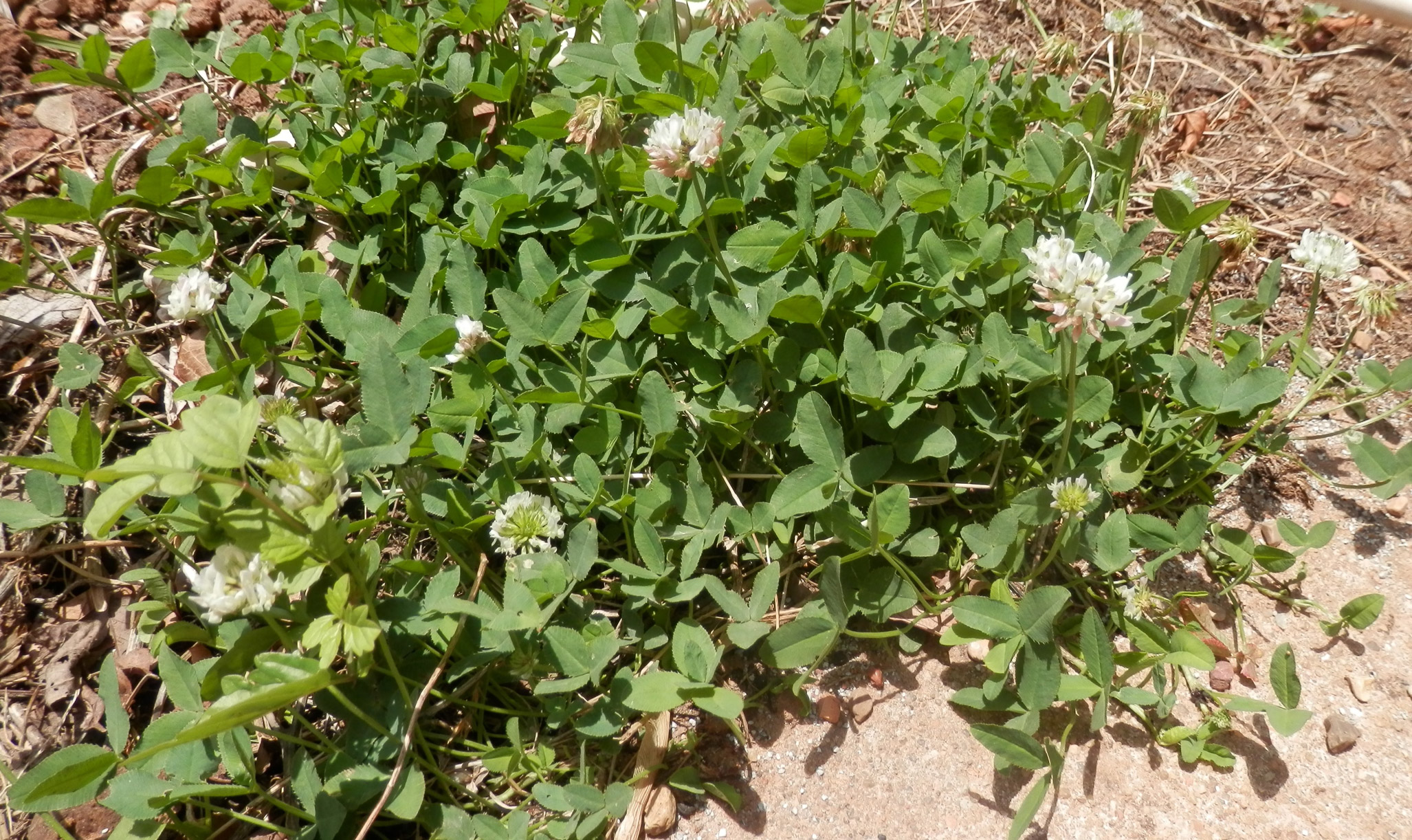
Trifolium repens
Common white clover or "Dutch clover" spreads through cultivated fields worldwide, but was probably indigenous to Europe, Africa, and parts of Asia, coming to the United States and Canada as a result of hybridization in Holland. Spreading by both seeds and rooting stems, clover quickly covers ground and grows well, actually grows best, with grass. Mowing only makes it stronger and it can take hoof and foot traffic, making it a good green cover for children's play areas.
The clover in the Territorial Garden grows in a moist area where the AC system for the south wing of the library empties into the garden. In that cool, moist environment, it thrives.
The Outlaws
Tribulus terrestris L. Greater Caltrop
Noxious weed with burrs locally known as Goatheads. This is the true bad boy of the territory. Growing low to the ground it escapes the mower. Running its taproot deep into the soil, it resists uprooting and shakes out seeds when tugged upon. The burrs are protected with a spiny case so sharp, it can puncture tires. It thrives in dry sandy soil, but becomes lush with watering. One article on eradicating the wrong element in lawns suggested a propane blow torch.
The worst thing about goatheads is that they do not emerge until after the plant has flowered. Once territorial settlers craving color in their gardens had allowed this devil to grow, it was too late. It had set down roots and was ready to take over. It has leaves and flowers similar to oxalis and is often mistaken for that well-behaved prairie citizen, but the sudden emergence of soft spiny balls along the vine, quickly alert the gardener to the difference.
This terriblus tribulus is trying to invade our small patch of buffalo grass and has called out shovel, trowel, and one determined librarian to do battle. Any assistance would be valued.
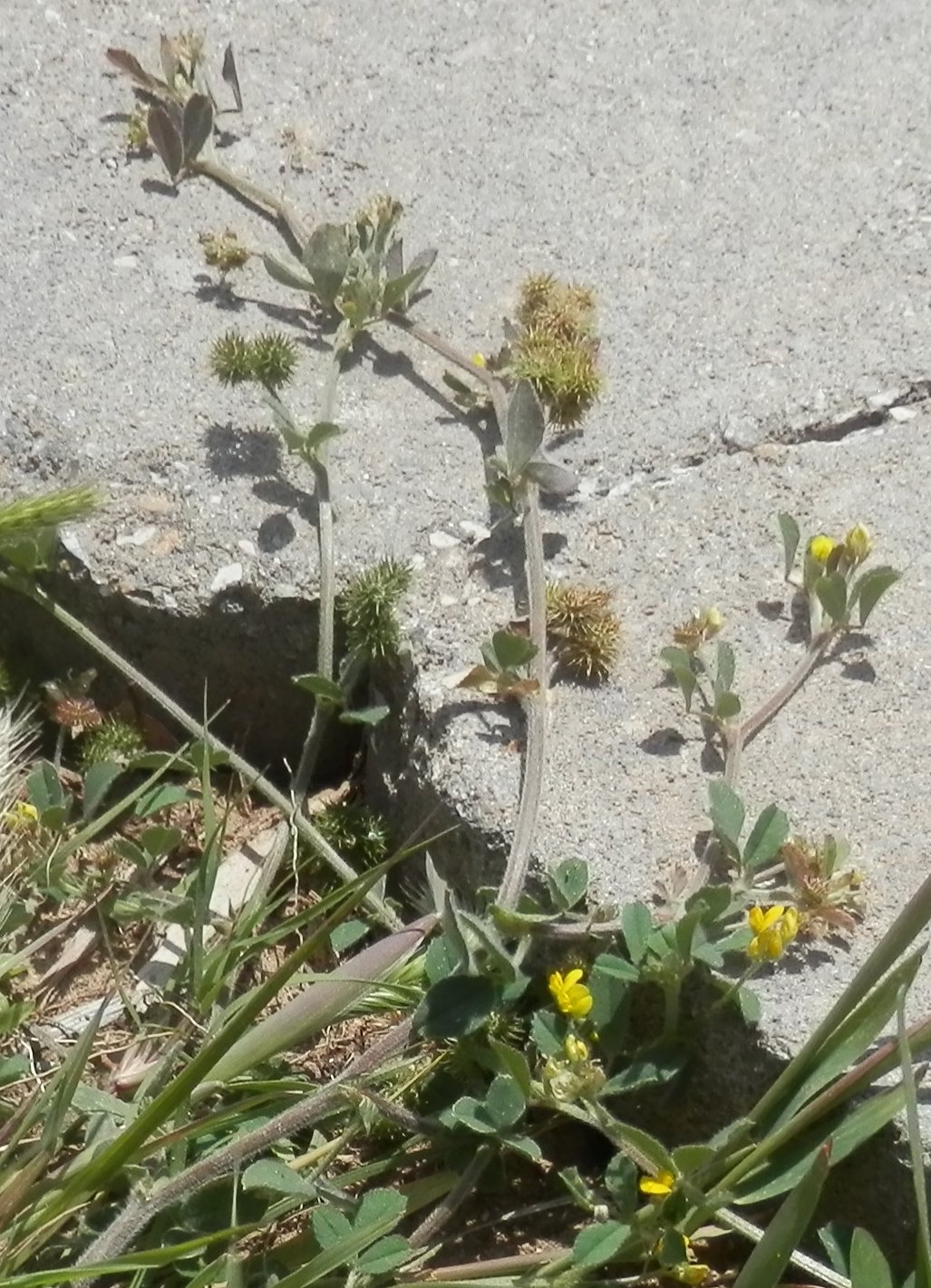
Campsis radicans
Trumpet Vine, the Kudzu of Oklahoma. It grows. It climbs. It spreads. It's eye-pop gorgeous, but deadly. NEVER PLANT THIS VINE!
Of all the lovely undesirables that invaded the territory, this is the most insidious. For the first few years, it is a well-behaved settler, but then it begins to covet its neighbor's fence and barn, sending out shoots 20-50 feet away.
The root must be the size of a whale.
We inherited this monster and have been trying to dig it out since beginning the garden. It loves our clay soil and brick wall. As you drive around Hennessey, you will see it everywhere, beautiful, flamboyant, drought tolerant and rampant.

